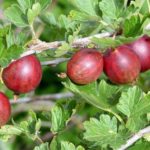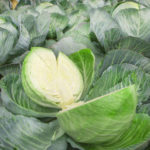Sowing carrot seeds in open ground
Carrots are a valuable vegetable crop. It is included as an ingredient in most culinary dishes, is used for the industrial production of carotene, and is processed in huge quantities at food processing plants (mashed potatoes, juices, candied fruits).
Carrots are grown by both large agricultural firms and amateur gardeners. Its cultivation is not very difficult, however, there are some nuances here.
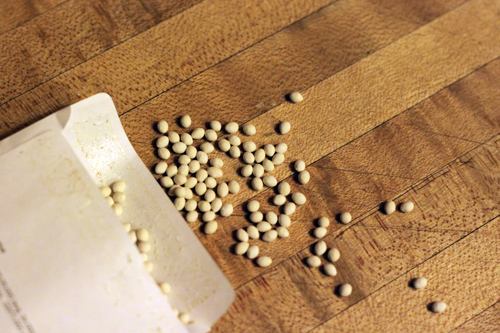
Features of culture
Carrots, like beets, are biennial crops; in the first year after planting it forms a root crop, and in the second year it blooms and bears fruit.
The germination rate of carrot seeds is about 70%, and the germination period can vary from 10-15 days (under favorable conditions) to a month. The duration of germination depends on the temperature regime and soil moisture. For example, in the temperature range from +2 to +5 ° C, seeds will germinate in 25-30 days; at 10-15 ° C, seedlings appear on the 9-10th day. At an optimal temperature (20-25 ° C), friendly shoots can be expected already for 4-5 days.
Another important feature of carrot seeds is the presence of essential oils containing germination inhibitors (like parsley). But this also has an advantage - this crop can be sown with dry seeds before winter.
Seedlings are able to withstand low temperatures down to -4 ° C, but long-term frosts at -6 ° C are fatal for seedlings.
Depending on the cultivar type (early, mid or late ripening cultivars), the formation of the root crop ends in 80-140 days. The most comfortable temperature for normal vegetation and root crop formation is 20-22 ° С.
Carrots, in comparison with other root crops, are more drought-resistant (optimally 75-80% HB), however, after sowing and during the first phase of development (growth of leaves), it makes increased demands on soil moisture.
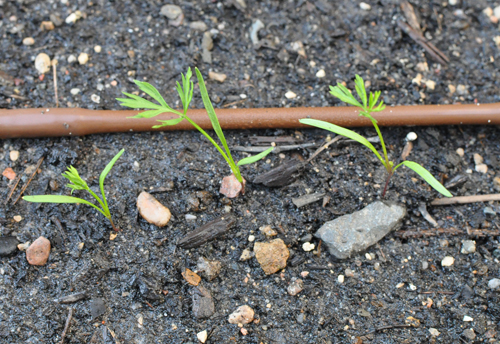
Site selection and soil preparation
Heavy floating soils are not suitable for culture - carrots feel comfortable on sandy loam soils and light loams. If the land was fertilized with manure, then it is not recommended to plant carrots earlier than after 1-2 years.
Carrots are planted mainly after tomatoes, cucumbers, siderates. The best predecessors are early potatoes, cabbage, zucchini.
For the formation of a high-quality root crop, loose soil is needed, therefore, the area where the cultivation of carrots is planned must be dug to a depth of 10-15 cm and fenced.
For digging, mineral fertilizers are applied at the rate of the active substance: nitrogen - 30-90 kg, phosphorus - 60-100 kg, potassium - 60-180 kg (the amount is indicated per 1 ha; the dose of application varies depending on the supply of soil with nutrients).
Dates of planting in open ground
Sowing timing is one of the most important issues when growing carrots! Experienced gardeners are advised to be guided by the results of long-term forecasts. For example: in the case of a protracted spring with heavy rainfall, sowing can be postponed; if dry weather is expected, then you should not delay planting carrots.
When calculating sowing dates, it is also necessary to take into account the peculiarities of regional zones. For example, carrots are sown at several times, starting from March 1-10 in the southern regions (the Caucasus, Ukraine, the Lower Volga region, Central Asia) until the gray hair of May. Until June 20 - July 10 in the North Caucasus and until April 1-15 in some regions of Central Asia.
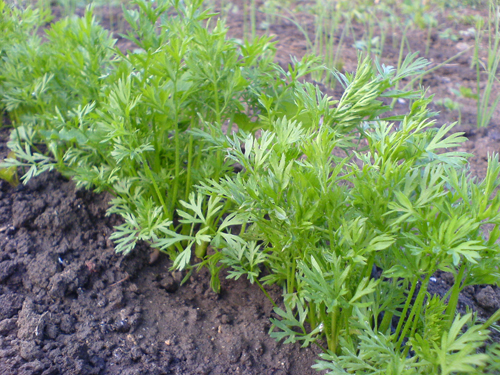
In the area of irrigated agriculture, the sowing time can vary in an even wider range.
Soaking the seeds reduces the germination time by 3-4 times (!).
It is also necessary to take into account the purpose of obtaining products (bunch, root crops of quick use, long-term storage), as well as the type of seed.
Presowing preparation of carrot seeds
Dry seeds, unlike soaked ones, germinate longer under equal conditions. By the way, soaking the seeds allows you to reject the underdeveloped, in which the chances of germination "tend to zero."The inoculum is soaked for a day, replacing the water 3 or more times, until the liquid stops staining. Already after 10 hours, substandard seeds can be discarded - they float on the surface, while full-fledged ones "drown". At the end, the seeds are dried, and then they are ready for sowing.
Additionally (advice from experienced):
- Bubbling (saturation of water with oxygen) significantly accelerates the breakdown of inhibitors. For the simplest bubbler, you can use, for example, an aquarium compressor.
- Carrots "love" copper, boron and molybdenum. It is recommended to add these microelements to water when soaking (1-2 g each of copper sulfate, boric acid or borax, “methylene blue”).
Important! Modern "blue" does not contain molybdenum, it is "methylene blue" that is needed - it can be purchased in stores selling veterinary drugs.
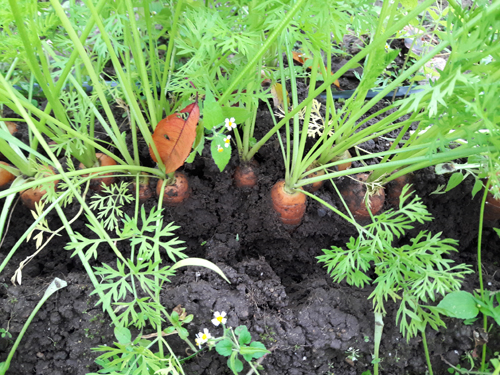
Sowing carrots
Seeds are sown with "ribbons" (in grooves), the distance between which is 15-30 cm. The seeding depth is no more than 2 cm, otherwise it will take longer to wait for germination. The grooves are pre-watered.
In order not to be distracted by the thinning of seedlings (and this is inevitable), it is advisable to sow seeds using small-scale mechanization means - mini-seeders. There are other "secret methods" as well. Each of the techniques suggested below has its own disadvantages and advantages.
Sanding... The method consists in mixing seeds with coarse sand in a ratio of 1:10. This is the simplest method, but uniform seed distribution cannot be guaranteed.
Gelation... This method provides more guarantees for an even distribution of seeds. The method consists in mixing seeds with starch paste or agrogel. By the way, trace elements and remedies can be added to the composition.
Rigid fixation... The method is more laborious, but the effect is quite high. The essence of the method is gluing seeds onto strips of toilet paper using a paste.
Pelleting... After soaking, the seeds are placed in a jar, covered with dry inert material (sand, peat crumbs, fine perlite) and shaken vigorously. Particles of inert material adhere to wet seeds and small "peas" are formed. At the end, the pills are dried and sown at a distance of 4-5 cm from each other.
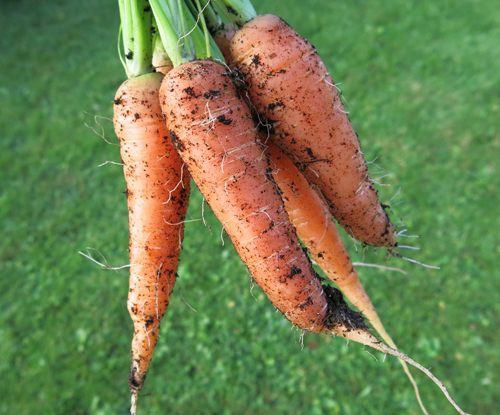
At the end of the work, the grooves are covered with a layer of soil and rolled (trampled) to ensure the most dense contact of the seeds with the soil.
Planting care
After the emergence of seedlings, the main care consists in removing weeds, ensuring the density of the plants (thinning), watering and feeding.
- Weeding. As a rule, weed shoots appear earlier than carrots begin to germinate. Experienced gardeners add seeds of "lighthouse crops" (radish, mustard) to carrot seeds even during sowing. "Beacons" quickly sprout and facilitate the care of the garden bed - on such plantings, you can quickly get rid of the shoots of weeds, as well as ensure timely watering.
- Thinning. For the normal development and formation of root crops, it is necessary to provide an optimal feeding area. When growing bunch products, the seedlings are thinned so that there is a distance of 5-6 cm between the plants. When growing conditioned root crops, 8-12 plants are left per 1 running meter.
- Watering. Before germination and in the first phase of development, the beds are watered three times a week (for 1 m2 - 4 liters of water). By the middle of the growing season, the frequency of watering is reduced to 1 time per week, but the volume of water is doubled.
- Top dressing. For carrots, 2 dressings are enough (including foliar treatment with microelements) per season. If fertilizers were applied during the preparation of the beds, then there is no need for root dressing.
Instead of an epilogue
Ugly root crops are formed when fresh manure is applied before sowing, as well as when the soil is contaminated with solid organic residues or pebbles. In the case of "tightness" and with the abuse of nitrogen fertilizers, the ugliness of root crops is also observed, in addition, in the latter case, carrots become vulnerable to diseases and are poorly preserved.
It is better to store large quantities of carrots in piles - in the cellar, root crops quickly lose moisture and are affected by fungi.
It is advisable to alternate planting carrots with onions. Such a "commonwealth" is ideal: carrots protect the onion from onion flies, and onions ward off carrot flies.




